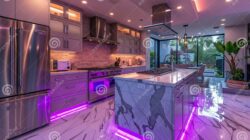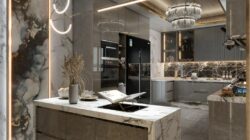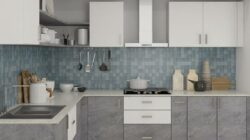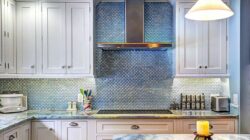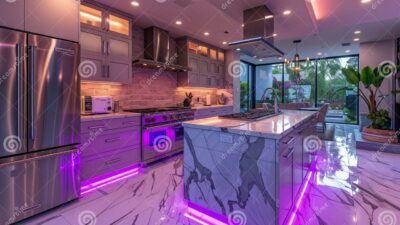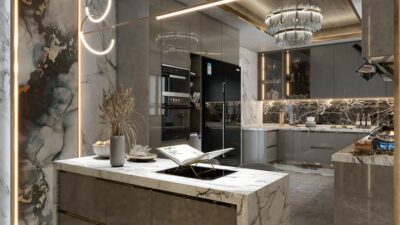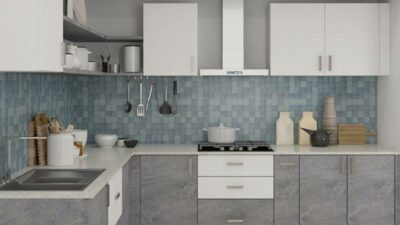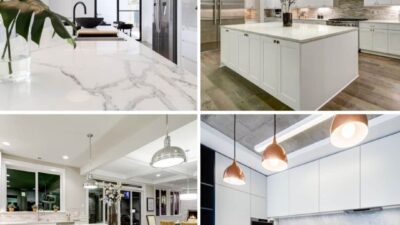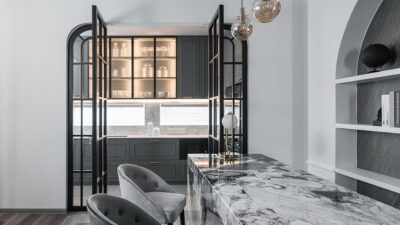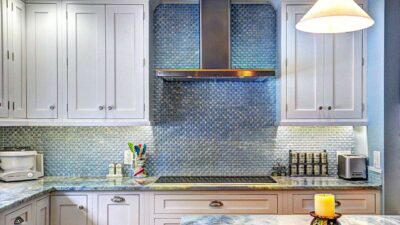Pros and cons of using marble in a high-end kitchen: The allure of marble’s luxurious veining and timeless elegance is undeniable, making it a coveted choice for discerning homeowners. However, this stunning material comes with a set of practical considerations. This exploration delves into the aesthetic appeal, durability, cost, and maintenance demands of marble, helping you decide if it’s the right fit for your dream kitchen.
From the subtle veining of Carrara marble to the dramatic drama of Nero Marquina, the choices are vast, each impacting both the visual impact and the overall cost. We’ll weigh the benefits against potential drawbacks like susceptibility to staining and scratching, providing a balanced perspective to guide your decision-making process. We’ll also consider the long-term value and explore sustainable sourcing practices, ensuring your choice aligns with both your style and your values.
Aesthetics and Design
Marble’s inherent beauty makes it a coveted material for high-end kitchens. Its natural variations in color and veining create a unique and luxurious aesthetic that’s difficult to replicate with other materials. The subtle interplay of light and shadow on the stone’s surface adds depth and character, elevating the overall ambiance of the space.The visual impact of marble significantly depends on the specific type chosen.
Different marbles offer distinct color palettes and veining patterns, catering to diverse design preferences. The selection process involves considering how the chosen marble will complement existing design elements, such as cabinetry, backsplashes, and flooring.
Comparison of Marble Types in High-End Kitchens
The aesthetic differences between various marble types are substantial. Carrara, Calacatta, and Nero Marquina are three popular choices, each bringing a unique character to a kitchen. Carrara marble, known for its classic elegance, typically features a white or light gray background with delicate gray veining. Calacatta, on the other hand, boasts a brighter white background with bolder, often thicker, gray veining, giving it a more dramatic appearance.
Nero Marquina, a striking black marble, is characterized by its dramatic white veining, creating a sophisticated and modern contrast.
| Marble Type | Color | Veining | Overall Style |
|---|---|---|---|
| Carrara | White to light gray | Delicate gray veining, often subtle | Classic, elegant, timeless |
| Calacatta | Bright white | Bold, thicker gray veining, often dramatic | Luxurious, dramatic, statement piece |
| Nero Marquina | Deep black | Thick, dramatic white veining | Modern, sophisticated, dramatic |
Durability and Maintenance

Source: ytimg.com
Marble, while undeniably beautiful, requires a thoughtful approach to upkeep. Its inherent properties, while contributing to its luxurious appeal, also mean it’s susceptible to certain types of damage if not properly cared for. Understanding its vulnerabilities and implementing the right maintenance strategies is crucial for preserving its pristine condition in a high-end kitchen environment.Marble’s durability is a complex issue.
While it’s a relatively hard stone, it’s not impervious to damage. Its susceptibility to scratching, staining, and etching makes regular cleaning and preventative measures essential. The specific level of durability can also vary based on the type and quality of the marble itself; some varieties are denser and more resistant than others.
Marble countertops offer a luxurious look but require careful maintenance; their susceptibility to staining and etching is a major drawback. However, choosing the right marble can significantly impact the overall aesthetic, especially when considering modern smart kitchen design trends for luxury homes, as seen in this article: modern smart kitchen design trends for luxury homes.
Ultimately, the pros and cons of using marble need careful weighing against your lifestyle and design preferences.
Scratch Resistance
Marble’s hardness is rated around 3-4 on the Mohs Hardness Scale, meaning it’s softer than many other countertop materials like granite or quartz. This means it can be scratched by harder objects such as knives, abrasive cleaning tools, and even some cookware. While deep gouges are less common, lighter scratches are more likely to occur. Using cutting boards and trivets is crucial to minimize the risk of scratching.
Regular, gentle cleaning also helps prevent the accumulation of grit that can act as an abrasive.
Marble countertops offer a luxurious look but are prone to staining and chipping. Weighing the pros and cons is crucial for any high-end kitchen remodel, especially when considering overall safety. For instance, integrating smart features like those discussed in this article on smart kitchen security and safety features for luxury homes can help mitigate risks, like gas leaks, which are especially important when using a material like marble that requires careful maintenance.
Ultimately, the decision depends on your priorities and budget.
Stain Resistance
Marble is porous, meaning it can absorb liquids. This porosity makes it susceptible to staining, especially from acidic substances like lemon juice, wine, and vinegar. While sealed marble offers some protection, spills should be cleaned up immediately to prevent staining. The longer a spill sits, the greater the chance of penetration and permanent discoloration. Certain types of stains, particularly those from oil-based substances, can be more difficult to remove than others.
Heat Resistance, Pros and cons of using marble in a high-end kitchen
Marble’s relatively low heat resistance is another crucial factor. Placing hot pots and pans directly on the surface can cause thermal shock, leading to cracking or etching. Always use trivets or hot pads to protect the marble from direct heat exposure. Even seemingly moderate heat can cause discoloration over time, especially near the stovetop. The thermal shock resistance can be slightly improved with proper sealing, but it’s always best to exercise caution.
Cleaning and Maintenance Procedures
Regular cleaning is key to maintaining the beauty and integrity of marble countertops. Avoid harsh chemicals, abrasive cleaners, and scouring pads. A simple solution of mild dish soap and warm water is often sufficient. Always wipe up spills immediately and use a soft cloth or sponge to clean the surface. Avoid using bleach or acidic cleaners, as these can damage the stone.
Sealing Marble Countertops
Sealing marble countertops creates a protective barrier against stains and etching. This process involves applying a penetrating sealer that fills the pores of the stone, preventing liquids from penetrating the surface. It’s recommended to seal marble countertops before use and then reseal every one to two years, or more frequently if necessary, depending on usage and the type of sealer used.
Marble’s elegance in a high-end kitchen is undeniable, offering a luxurious aesthetic, but its susceptibility to staining and etching is a significant drawback. Choosing the right combination is key, and exploring options like those shown in this guide on luxury marble kitchen cabinets and hardware combinations can help you make an informed decision. Ultimately, weighing the pros and cons carefully will determine if marble truly suits your high-end kitchen project.
Step-by-Step Sealing Guide
- Clean the countertop thoroughly with a mild detergent and water, ensuring the surface is completely dry before proceeding.
- Apply the sealer evenly to the countertop using a soft cloth or applicator, following the manufacturer’s instructions.
- Allow the sealer to penetrate the stone for the recommended time, usually around 15-30 minutes.
- Wipe away any excess sealer with a clean, soft cloth.
- Allow the countertop to dry completely for at least 24 hours before use.
The frequency of resealing depends on factors like usage and the type of sealer. Regular inspections for water beading are a good indicator of whether resealing is needed. If water no longer beads on the surface, it’s a clear sign that the sealer has worn off and it’s time to reseal.
Cost and Value
Marble countertops represent a significant investment in a high-end kitchen, but their cost must be weighed against their long-term value and the cost of alternative materials. Understanding the price differences and potential return on investment is crucial for informed decision-making.The initial cost of marble countertops is considerably higher than many alternatives. Factors influencing the price include the type of marble, its origin, veining patterns, and the level of finishing required.
While some homeowners might find the expense prohibitive, others see it as an investment that enhances the overall value of their home.
Marble Costs Compared to Alternatives
Marble’s premium price point stems from its natural beauty and unique characteristics, which are difficult to replicate artificially. Quartz and granite, popular alternatives, generally cost less per square foot. However, high-end quartz options can approach the cost of some marble varieties. The price disparity can significantly impact the overall kitchen renovation budget. For instance, a large kitchen requiring extensive counter space will see a much larger price difference between marble and more budget-friendly options than a smaller kitchen.
Long-Term Value and Return on Investment
While the upfront cost is high, marble countertops are known for their longevity. With proper care, they can last for decades, even generations, significantly increasing the long-term value of a home. This longevity translates to a better return on investment compared to materials requiring more frequent replacement, such as laminate. The unique beauty of marble also adds a significant aesthetic value, making a property more attractive to potential buyers.
High-end finishes and rare marble varieties can further enhance the resale value. In certain markets, a kitchen featuring high-quality marble countertops can command a premium price. For example, a luxury home in a desirable neighborhood might see a substantial increase in value thanks to the presence of luxurious marble.
Estimated Cost Per Square Foot
The cost of countertop materials varies greatly depending on factors such as type, quality, and availability. The following table provides a general estimate; actual prices may vary depending on location and supplier.
| Material | Low-End Cost ($/sq ft) | Mid-Range Cost ($/sq ft) | High-End Cost ($/sq ft) |
|---|---|---|---|
| Marble (e.g., Carrara) | 75 | 150 | 300+ |
| Granite | 50 | 100 | 200 |
| Quartz | 60 | 120 | 250 |
Practicality and Functionality
Marble’s inherent beauty makes it a coveted material for high-end kitchens, but its practicality in a high-traffic, often messy environment requires careful consideration. While its elegance is undeniable, certain aspects of its functionality need to be weighed against its aesthetic appeal. The balance between luxury and practicality is key when choosing marble for a kitchen.Marble’s porous nature is its biggest functional hurdle.
This means it’s susceptible to staining from spills like red wine, coffee, or even acidic fruit juices. The absorption of liquids can also lead to etching, where the surface is permanently damaged, creating dull spots. While sealing can mitigate these issues, it’s not a foolproof solution and requires regular maintenance. High-traffic areas, especially near the sink or stove, are particularly vulnerable.
The weight of the material itself is also a factor to consider, especially for countertops or islands, potentially requiring specialized installation and support.
Marble’s Porosity and Staining
The porous nature of marble means it readily absorbs liquids, leading to staining and etching. Spills need to be cleaned immediately to minimize damage. Even sealed marble requires careful attention, as the sealant is not permanent and needs to be reapplied periodically. The frequency of resealing depends on the level of kitchen traffic and the type of sealant used.
For instance, a busy family kitchen might require resealing every 6-12 months, whereas a less-used kitchen could potentially go longer. Darker colored marbles tend to show staining less readily than lighter ones. However, even dark marbles are not immune to staining and etching, especially with prolonged exposure to acidic substances.
Examples of Effective and Less Suitable Marble Use in Kitchens
A large, open-plan kitchen with a marble island, used primarily for food preparation, may be a suitable application. The island’s large surface area provides ample space for prepping, while its visual impact elevates the room’s design. However, this approach would need meticulous maintenance. Conversely, using marble as a backsplash in a smaller, more compact kitchen with limited counter space could prove problematic.
The constant risk of spills and splashes on a porous surface would necessitate near-constant cleaning and potential for staining, diminishing its practicality in a high-use area. A more suitable alternative in a compact kitchen might be a more durable and easier-to-maintain material for the backsplash, such as porcelain or ceramic tile, while reserving the marble for a statement piece, such as a smaller countertop section or a decorative accent.
Another less suitable example would be using marble in a kitchen where young children or pets frequently roam. The risk of accidental spills and scratches increases significantly, requiring more intensive and frequent maintenance.
Integration with Other Materials: Pros And Cons Of Using Marble In A High-end Kitchen
Marble’s inherent elegance allows for seamless integration with a wide range of materials commonly found in high-end kitchens, creating visually stunning and functionally efficient spaces. The key is to choose complementary materials that enhance, rather than compete with, the marble’s natural beauty and luxurious feel. Careful consideration of texture, color, and overall design style is crucial for achieving a cohesive and sophisticated aesthetic.The versatility of marble means it can be successfully paired with both warm and cool tones, offering a multitude of design possibilities.
Its smooth, cool surface contrasts beautifully with the warmth of wood, while its veining patterns can be subtly echoed in the grain of certain wood species. Similarly, the sleek, modern lines of stainless steel appliances complement the polished sophistication of marble, creating a balanced and contemporary look.
Marble’s Synergy with Various Kitchen Materials
Imagine a kitchen where the cool, creamy white of Calacatta marble countertops is offset by the rich, dark brown of walnut cabinetry. The subtle grey veining in the marble is echoed in the wood grain, creating a harmonious flow between the two materials. A stainless steel range hood, with its clean lines and brushed finish, hangs above the marble backsplash, its metallic sheen contrasting beautifully with the matte finish of the countertop.
The floor is a wide-plank, light oak, providing a warm base that grounds the cooler tones of the marble and stainless steel. Brass hardware accents on the cabinetry add a touch of warmth and luxury, tying the various elements together. This combination of materials creates a kitchen that is both sophisticated and inviting, a testament to the versatility of marble in high-end design.
Material Pairings Enhancing Marble’s Aesthetic and Functional Aspects
Choosing complementary materials is essential to maximize the impact of marble in a high-end kitchen. The following list showcases successful pairings that enhance both the visual appeal and practical functionality of marble:
- Wood Cabinetry (Walnut, Cherry, Oak): The warm tones and natural grain of these woods create a beautiful contrast to the cool, smooth surface of marble, offering a sense of balance and sophistication. Darker woods like walnut create a dramatic effect, while lighter woods like oak provide a brighter, more airy feel.
- Stainless Steel Appliances: The sleek, modern lines of stainless steel appliances complement the polished sophistication of marble, creating a clean, contemporary look. The contrast between the cool metallic sheen and the natural stone adds visual interest.
- Brass or Bronze Hardware: These warm metallic accents add a touch of luxury and warmth, softening the cool tones of the marble and providing a visual counterpoint to the stainless steel. They also create a sense of elegance and sophistication.
- Glass Backsplash: A glass backsplash can reflect light, enhancing the luminosity of the marble and creating a sense of spaciousness. The transparency of the glass allows the marble to be the focal point, while also protecting the wall from splashes and stains.
- Dark-Colored Flooring (Slate, Granite): A dark-colored floor provides a grounding element that prevents the lighter marble from appearing washed out or overly bright. The contrast creates a sense of visual depth and sophistication.
Sustainability and Ethical Sourcing
Marble, a material synonymous with luxury and elegance, carries a significant environmental footprint. Its extraction and processing require substantial energy and resources, raising concerns about its long-term sustainability. Understanding the environmental impact and ethical considerations associated with marble is crucial for informed decision-making, particularly in high-end applications like kitchen countertops.The environmental impact of marble extraction and production is multifaceted.
Quarrying itself disrupts ecosystems, leading to habitat loss and soil erosion. The process often involves blasting and heavy machinery, resulting in noise and air pollution. Transportation of the raw material and finished products contributes further to carbon emissions. Manufacturing, including cutting, polishing, and finishing, also consumes significant energy and water, generating waste in the form of dust and slurry.
The overall lifecycle assessment of marble reveals a considerable environmental burden compared to some alternative materials.
Marble’s Environmental Impact Compared to Other Countertop Materials
Several countertop materials offer more sustainable alternatives to marble. Recycled glass countertops, for example, divert waste from landfills and reduce the demand for virgin materials. Engineered quartz, while not entirely natural, often incorporates recycled materials and has a lower environmental impact than marble extraction. Solid surface materials, such as Corian, are also manufactured with a focus on reducing environmental impact through efficient production processes and the use of recycled content.
While each material has its own environmental footprint, a comparative life cycle assessment would highlight the relatively higher impact of marble extraction and processing. For instance, studies comparing the embodied carbon of various countertop materials often show engineered stone and recycled glass having lower carbon footprints than natural stone like marble.
Ethically Sourced Marble
Sourcing ethically produced marble is paramount. This involves verifying that the quarry operates responsibly, adhering to environmental regulations, and ensuring fair labor practices. Look for certifications or labels that attest to sustainable quarrying methods, such as those focusing on minimizing environmental damage, reducing water consumption, and implementing effective waste management strategies. Transparency in the supply chain is also crucial, allowing consumers to trace the marble’s origin and verify its ethical sourcing.
Choosing marble from quarries that prioritize worker safety and fair wages contributes to a more responsible and sustainable approach to material selection. Supporting quarries committed to these principles directly influences the industry’s overall sustainability and ethical practices. Consumers can demand transparency and accountability from suppliers, driving positive change within the marble industry.
Epilogue
Ultimately, the decision of whether to incorporate marble into your high-end kitchen hinges on a careful balancing act. While its undeniable beauty and potential for increased home value are significant advantages, the commitment to proper maintenance and the higher initial cost are crucial factors to consider. By weighing the pros and cons presented here, you can make an informed choice that aligns perfectly with your lifestyle, budget, and design vision, ensuring your kitchen remains a source of pride and enjoyment for years to come.
Frequently Asked Questions
Is marble suitable for a busy family kitchen?
While marble’s elegance is undeniable, its susceptibility to staining and scratching means it requires more diligent care in a high-traffic area. Regular sealing and careful cleaning are essential.
How much does professional marble installation cost?
Installation costs vary significantly based on factors like the complexity of the design, the amount of material needed, and the installer’s location and experience. Expect to pay a premium for professional installation.
Can I repair minor chips or scratches in my marble countertop?
Minor chips and scratches can often be repaired by professionals using specialized techniques and fillers. Larger damage may require replacement of the affected section.
What are some eco-friendly marble options?
Look for marble sourced from quarries with sustainable practices and certifications that prioritize environmental protection and responsible resource management. Inquire about the quarry’s environmental impact and worker safety standards.

